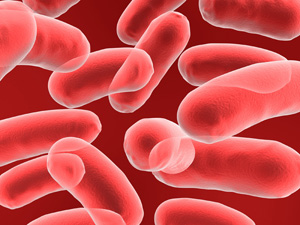Salmonella Virus

What Is A Salmonella Virus?
Most people are confused about salmonella and wonder if it is a virus or salmonella bacteria that affects the body. Salmonella is most definitely a bacteria and it becomes clear when it begins to affect either an animal or a person. Birds, reptiles, flies and rats can carry salmonella bacteria and it is very contagious. When any animal has this type of bacteria it can spread it by nasal secretions, dust that comes from their coats or feathers and also from eliminations. The bacterium dries and contaminates an entire area. Any person or animal can ingest this potentially harmful substance and become infected with salmonella bacteria.
Another way people become ill from salmonella is by eating raw foods. Raw meats, eggs and unpasteurized milk sometimes contain this type of bacterium. It is recommended that if people eat these types of foods, that they must cook them thoroughly before consuming them. For example, if you are cooking chicken it will need to reach at least one hundred and eighty degrees before it is considered safe to eat. You can use a kitchen thermometer to make sure that meat is always cooked thoroughly.
Salmonella is not a virus but a bacterium. The differences between the two are like night and day. A bacterium is a living organism and a virus is a section of DNA covered by a shell. A bacterium has the ability to reproduce and form thousands or even millions of bacteria. Although most types of bacteria are present in the body and do not cause any harm and can even be helpful, there are a few like salmonella bacteria that negatively affect the body. A virus has to attach itself to a living cell. It has tiny leg like spikes that penetrate the cell. Once the cell is penetrated, the virus can infect it with its own genetic code. When the infected cell starts to die, it explodes. This sends thousands of copies of the original virus to infect other cells. Most bacterial infections can be cleared up with antibiotics, while there is no cure for viruses. But there are certain types of bacteria that can become antibiotic resistant.
A salmonella bacteria attacks the body quickly. Within twelve to seventy to hours after the infection is introduced to the body symptoms can start to show up. Stomach cramping, a high fever and diarrhea are seen and usually in an average healthy person this can clear up by itself in a matter of days. But sometimes people infected may need to see a doctor if they become dehydrated because of too much diarrhea. When this happens they may be given an antibiotic to cure the infection and an IV to replenish fluids.
Infants, elderly people and people who have compromised immune systems are the most affected by bacteria like salmonella. Instead of experiencing the normal symptoms, they are more severe and things like excessive diarrhea and high fevers can become life threatening. In some cases, people within this select group have died from salmonella poisoning.
When people have this type of infection, it can be treated with an antibiotic. A doctor might also prescribe an anti diarrheal medication as well as a fever reducer. People who are young, old or that have compromised immune systems may be hospitalized until their illness if fully under control.
To make sure that you and your family are fully protected against salmonella bacteria, you can start by keeping counter tops and cooking surfaces clean. Encourage family members to wash their hands at least three times a day. If your or any member of your family comes in contact with or handles any type of animal make sure that they also wash their hands.